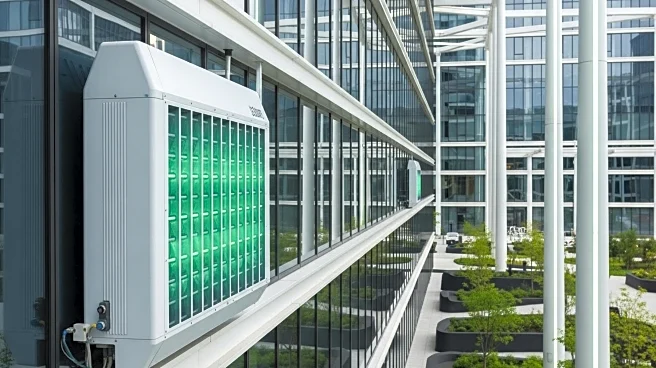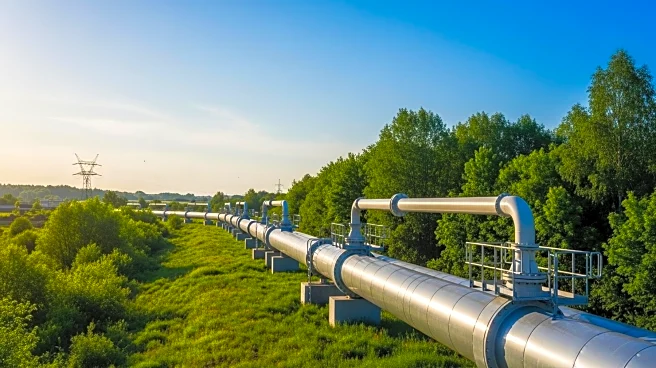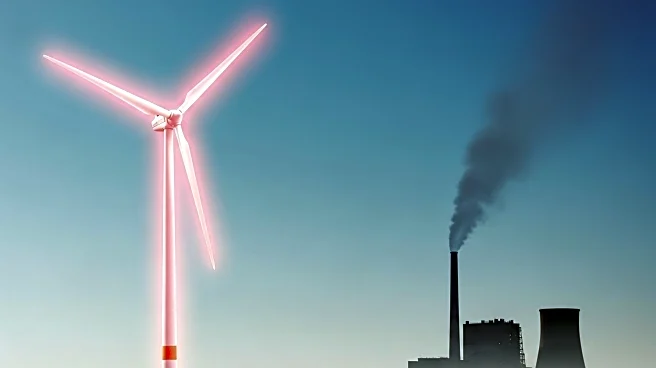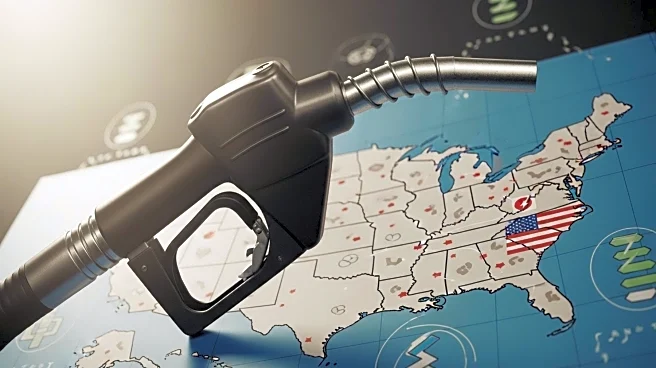What's Happening?
The Southern Renewable Energy Association has highlighted a significant increase in solar energy capacity within the Mid-Continent Independent System Operator (MISO) grid. Over the next three years, approximately 13.8 gigawatts of solar capacity are expected to be added. This development is part of a broader trend where MISO, traditionally a wind energy adopter, is now focusing on solar energy expansion. The shift comes amid a backdrop of slowed renewable energy growth due to current federal energy policies and a surge in data center construction, which has led MISO to also emphasize natural gas in the short term. Despite these challenges, the renewable energy transition continues to progress, with companies like Century Aluminum Company benefiting from the renewable energy resources available in the MISO grid.
Why It's Important?
The projected increase in solar capacity within the MISO grid is a critical development for the U.S. energy sector, particularly in the context of decarbonization efforts. This expansion supports the transition to renewable energy sources, which is essential for reducing carbon emissions and combating climate change. Industries reliant on energy, such as the aluminum sector, stand to benefit significantly from this shift. For instance, Century Aluminum's operations in Kentucky, which draw power from the MISO grid, are already leveraging renewable energy to produce low-carbon aluminum. This trend not only enhances the sustainability of industrial operations but also aligns with broader environmental goals. The growth in solar capacity could also influence energy prices and grid stability, impacting both consumers and businesses.
What's Next?
As the solar capacity in the MISO grid increases, stakeholders will likely focus on integrating these new resources into the existing energy infrastructure. This integration will require careful planning to ensure grid reliability and efficiency. Additionally, the renewable energy sector may see increased investment and policy support to sustain this growth trajectory. Companies involved in renewable energy and related technologies, such as SnerpaPower, may play a crucial role in optimizing energy management and supporting grid stability. The ongoing developments could also prompt further discussions on federal energy policies to facilitate a more robust transition to renewable energy sources.
Beyond the Headlines
The expansion of solar capacity in the MISO grid highlights the evolving landscape of the U.S. energy sector, where traditional energy sources are increasingly supplemented by renewables. This shift has broader implications for energy policy, economic competitiveness, and environmental sustainability. The transition to renewable energy is not only a technical challenge but also a cultural and economic one, requiring collaboration across industries and government entities. As renewable energy becomes more prevalent, it may drive innovation in energy storage, grid management, and energy efficiency technologies, further transforming the energy landscape.










